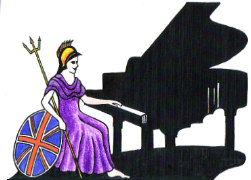Teachers, Accompanists and Piano Entertainers in the UK

UK Piano Page

Browse Locations England » Warwickshire » Middle Quinton
137A Grays Inn Road .
Bloomsbury, London WC1X 8TU
England
Peregrine's Pianos is the exclusive dealer in
111-113 Ewell Road
Surbiton, London KT6 6AL
England
We are one of the largest retailers of both new
36 New Yatt Road
witney
Witney, Oxfordshire ox28 1nz
England
Mildren Pianos is based in Witney, Oxfordshire.
St. Francis Hall
Baccabox Lane
Birmingham, West Midlands B47 5DD
England
Buying the right piano is often a difficult task,
53 King Street
Cobham, Berkshire KT11 2LH
England
Music Festival for performers and guests Our 10th
18-06-2022 12:30PM
The Morecambe Bay Piano Group was set up to extend
11-12-2021 01:00PM
The Morecambe Bay Piano Group was set up to extend
08-01-2022 01:00PM
The Morecambe Bay Piano Group was set up to extend
12-02-2022 01:00PM
Jazz Musivc in the UK Jazz in the UK is a form of music derived from jazz in the deep south of the USA. It arrived in the UK on records and Jazz performers who visited the country while it was a relatively new genre, soon after the end of World War I. Jazz began to be played by British musicians from the 1930s many in the south of England and became popular in the rest of the UK by 1940s, often within dance bands.
Ronnie Scott's Jazz Club opened in London, in 1959. Zoot Sims Jazz saxophonist was the club's first American visitor in 1962 Many famous Jaz artists have played there, including: Earl "Fatha" Hines, Chet Baker, Ella Fitzgerald, Anita O'Day, Nina Simone, Curtis Mayfield, Blossom Dearie, Dianne Reeves, Stacey Kent, Katie Melua, Jamie Cullum, Bobby Broom, Wynton Marsalis, Madeleine Peyroux, Prince, Chick Corea, Pat Metheny, George Benson and Cassandra Wilson. Also, in 1970 Jimi Hendrix's last public performance was at Ronnie Scott's.